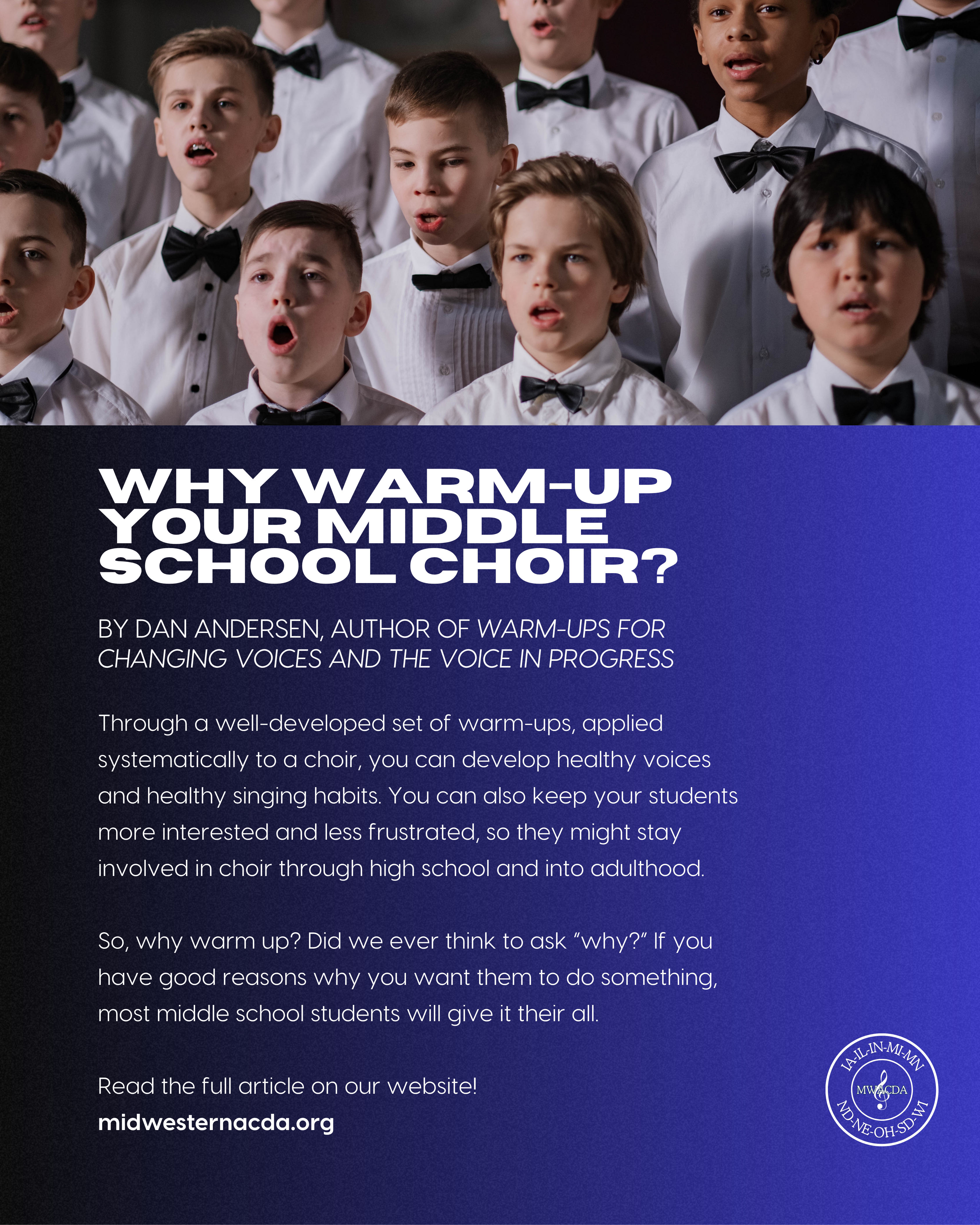
Why Warm-Up Your Middle School Choir?
Dan Andersen
Author of Warm-Ups for Changing Voices and the Voice in Progress
I’ve had the opportunity to work with adolescent voices for over 40 years as a choral director and private voice instructor. Developing the young voice into a mature adult voice, in a healthy way, has become a passion for me. I have found that through a
well-developed set of warm-ups, applied systematically to a choir, you can develop healthy voices and healthy singing habits. You can also keep your students more interested and less frustrated, so they might stay involved in choir through high school and into adulthood.
So, why warm up? I think we all remember back to our college voice lessons, and singing the obligatory warm-up exercises was what we did before we worked on literature. Piano lessons were structured the same way. Did we ever think to ask “why?” Well, that’s what middle school students do best! I had to have some strong reasons why we were spending time every day “not singing songs!” I’ve found that if you have good reasons why you want them to do something, most middle school students will give it their all.
As a middle school teacher, I use a lot of analogies in my teaching. I try to learn what the kids are involved in and make connections that make sense to them. I tend to use a lot of sports analogies because many of my students are involved in travel athletics, competitive dance, and cheer, and understand the connections I’m trying to make. These athletic analogies have paid big dividends for me over the years! So when I tell them that conditioning is one of the reasons we warm up, and they get it. Singing is an athletic activity, and I expect them to involve their whole body just as an athlete does. If we can get them to view our daily warm-ups in the same way, we will get them to see and hear the results in their voice that we are after. Most teams/athletes stretch before they practice or right before a game/meet. (In fact, my choirs do a physical stretch before we even start to vocalize) Athletes do this, partly, so they won’t pull muscles and so their bodies are ready to give their best no matter what comes their way during the game. We “stretch” our voices before we sing so we are ready for whatever vocal challenges we may encounter in the music.
Building voices is another reason we warm up. Like the athletes, who strive for “bigger, faster, stronger,” we are working for similar results. Our students need the ability to sing louder with control and accuracy, to be able to maneuver quick passages with control and consistency and to sing with a more intense or relaxed tone no matter what the dynamic level.
Developing an excellent tone quality is another important reason for our warm-ups. We can focus on developing a beautiful tone more easily during warm-ups than while working on literature. Isolating these techniques during warm-ups actually makes it easier and more effective to apply them to the literature!
Another important benefit of warming up is developing excellent breath control and proper breathing techniques. It is more efficient to isolate the breathing process through exercises than to teach it in the midst of working on literature. We are also isolating specific areas of growth during this warm-up time. Some of these areas include diction, flexibility, register transition, and intonation exercises to name a few.
I think it’s important to realize that, for most of us, we are the only voice teacher that 95% of our students will ever have. I approach every class like it’s a voice lesson for my students. I am responsible for their vocal growth and their vocal health. It is my responsibility to know the voice. It is also my responsibility to know their voices. If you have never taken a vocal pedagogy course, take one now. You have to become the expert so they can learn and grow. You have to know how to build a healthy voice. You have to know where the trouble areas are for your 6th-grade girls, 7th-grade boys, and all the rest of your students. A little bit of knowledge goes a long way, but a lot of knowledge can give your students a foundation for a lifetime of healthy, beautiful singing.

